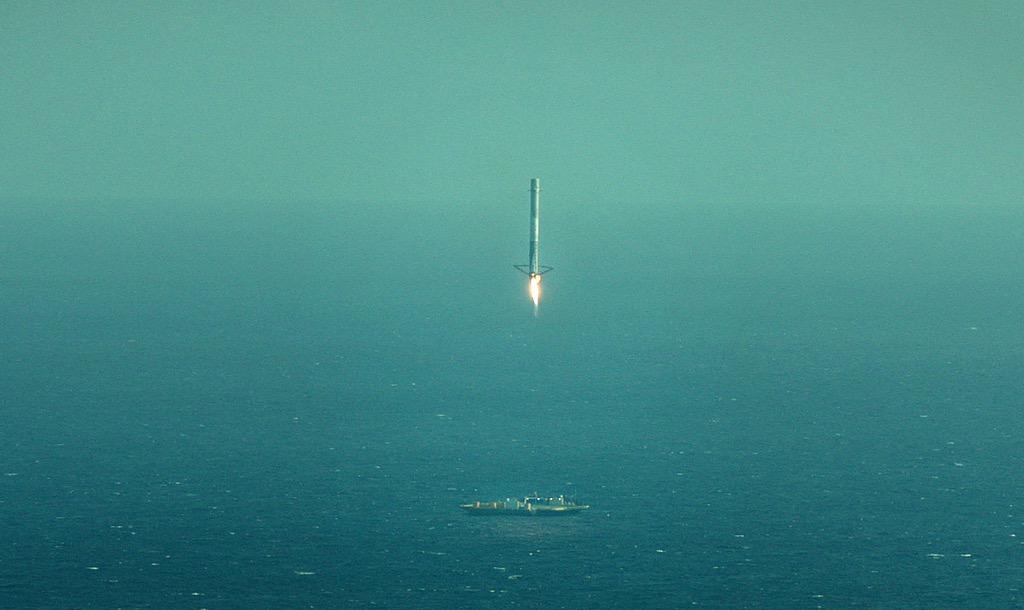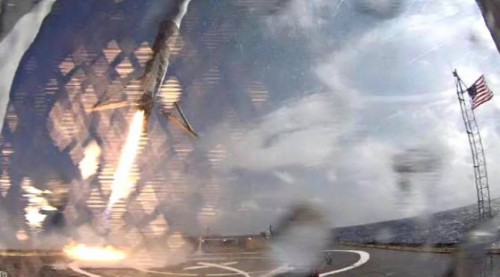
The
Falcon-9 CRS-6 first stage booster just before touching down on the
company’s offshore “Autonomous Spaceport Drone Ship.” According to
SpaceX leader Elon Musk, the rocket came down with excess lateral
velocity, causing it to tip over post landing. Photo Credit: SpaceX via
Twitter @ElonMusk

The Falcon-9 CRS-6 first stage booster just before touching down on the “ASDS. Photo Credit: SpaceX via Twitter @ElonMusk
“Looks like Falcon landed fine, but excess lateral velocity caused it to tip over post landing,” said Elon Musk via his Twitter account (@ElonMusk) after launch. “Either not enough thrust to stabilize or a leg was damaged. Data review needed.”
“Looks like the issue was stiction in the biprop throttle valve, resulting in control system phase lag,” added Musk this evening. “Should be easy to fix.”
A couple images from the ASDS released today, courtesy of Musk, also show the booster just prior to impact on the barge.
The company is making strides with developing the technology to land their boosters and re-use them. When they do finally land a rocket successfully, it will be a history-making feat, a game-changer that many expect the company to accomplish this year. As is expected during any testing and development, the odds of success are only 50/50 currently, but the odds of success will dramatically increase as the vehicle matures through the next few landing attempts.
Never has a rocket made a controlled landing after a launch, and the expectation is that once the SpaceX Falcon-9 is truly reusable it will drive down dramatically both the costs of access to space and turnaround time between launches.
The company is also planning similar operations at their west coast launch site at Vandenberg AFB, Calif. Another ASDS named “Of Course I Still Love You” will serve as the company’s Vandenberg barge while SpaceX continues on the reusability development path to landing their rockets back on solid ground.